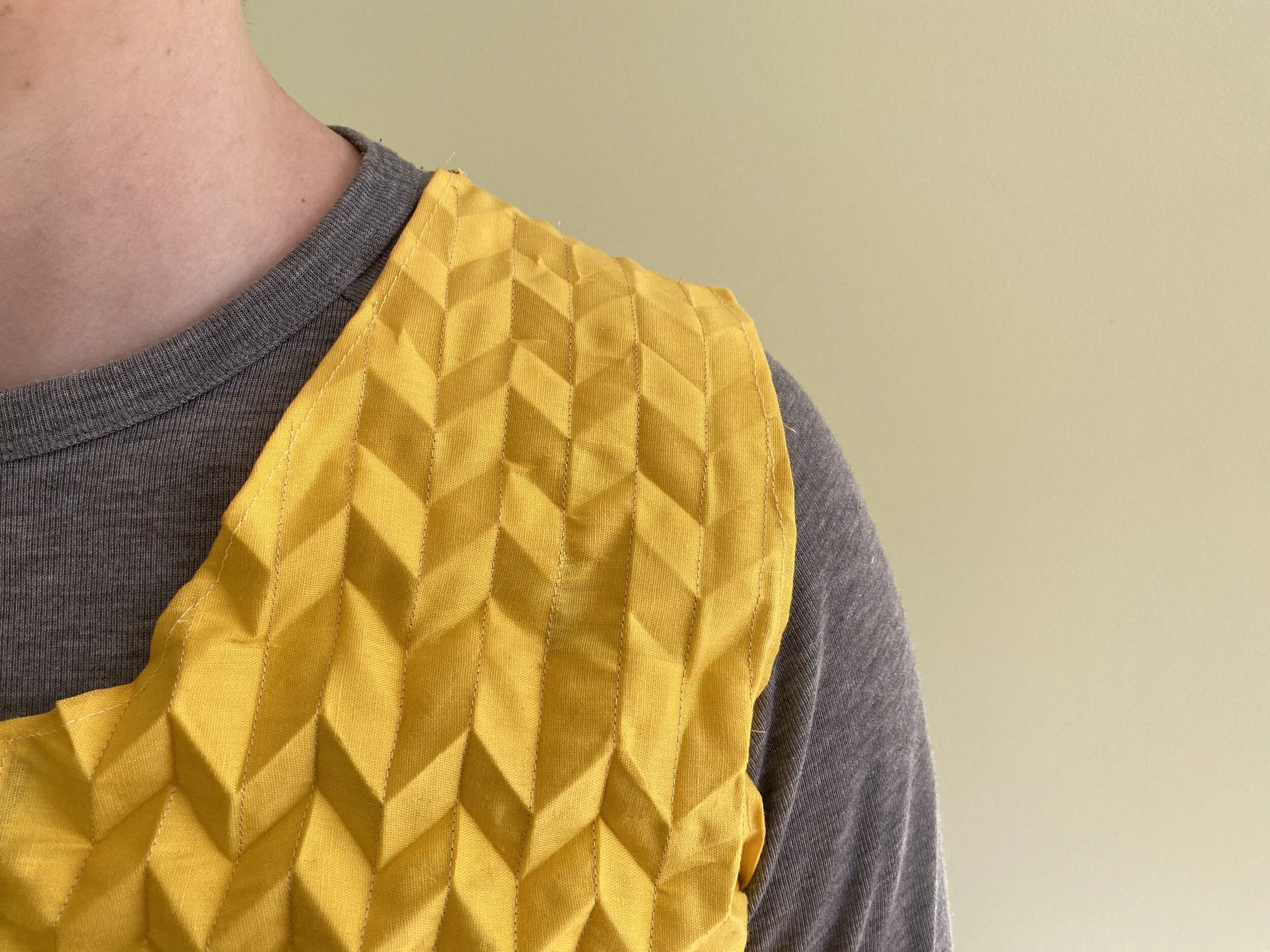Biofeedback Technologies
+
Clinical Psychology
Link is a family of speculatively designed products based on real modern technologies and research. The goal of Link is to lessen stress in small family units to help facilitate secure attachments between the child and care givers. Link achieves this through deciphering emotional states of each individual through the use of biofeedback technologies, communicating information between wearables, and the wearables responding to the information.
Link In Action
How Link Works
Link Detects
Heart Rate
Respiratory Changes
Hormone Content
Deciphers
Stress Level
General Emotional State
Severity of Stress
Communicates
Biofeedback between:
Primary Care-Giver Wearables
Secondary Care-Giver Wearables
Infant Wearable
Reacts
With Smart Textiles and Smart wiring
Then applies Deep Pressure Touch Sensation
And Mimics Heart Beat of Primary Care Giver
The Three Family Wearables
All three wearables are interconnected and send signals to each other throughout the day. They all respond similarly, the primary and secondary wearables employ pressure for deep pressure touch sensation when stress in another member is detected, where as the infant wearable starts to pulsate at the real time rhythm of the primary care giver.
Primary Care Giver Wearable
The primary and secondary care giver are assigned two separately designed wearables, each with their unique responsibilities in the family in mind. The primary care giver’s wearable is more responsive to the infant wearable. So, for example, when the infant is only mildly distressed, the primary care giver wearable will react when the secondary care givers wearable will be unresponsive.
Secondary Care Giver Wearable
As a secondary care giver, these individuals might be need to be outside the family more and thus do not need to be as connected to the infant throughout the day. However these care givers are vital in offering support to both their primary care giver and infant. For that reason, when the primary care giver is distressed or the infant has been distressed for a long period of time, the secondary care giver will be notified through deep pressure touch stimulation
Infant Wearable
The infant wearable largely sends out signals and reacts to its own wearers physiology. Instead of using compression, the infant wearable instead uses the rhythm of the primary care givers heart as a tool for self soothing. This is both for safety reasons and because the feeling of a heart beat or skin on skin has been shown to be calming for infants. This wearable is only meant for 3 to 18-24 month old children as once the child becomes verbal, they should no longer rely as heavily on the nonverbal communication that these wearables provide.
Communication System Diagram
Research
Facilitating Secure Attachments
What is a secure attachment and why is it important?
Attachments are made between infants and care givers during the first few years of life. This attachment style, whether it be secure or insecure, can carry out through life and affect our behavior in relationships, our psychological wellbeing and even our physical health. A secure attachment is when a child can safely go to a caregiver for love, security, assurance etc. with faith that they will be nurtured. This creates a strong foundation for all the child’s future interactions with others and themselves. What this means for the parents though, is a lot of self regulation and anticipation of needs.
Deep Pressure Touch Stimulation
Deep Pressure Touch Stimulation is essentially the feeling you get when you get a tight hug. It’s effective at calming the nervous system when it’s aroused and thus is a tangible way to use the mind | body connection. The chest and sternum are targeted by the smart textiles In addition, this location can also aid in redirecting attention to the chest and breathing as well.
USER Personas | Storyboards




Mood Boards




Process Sketches








Final Process










